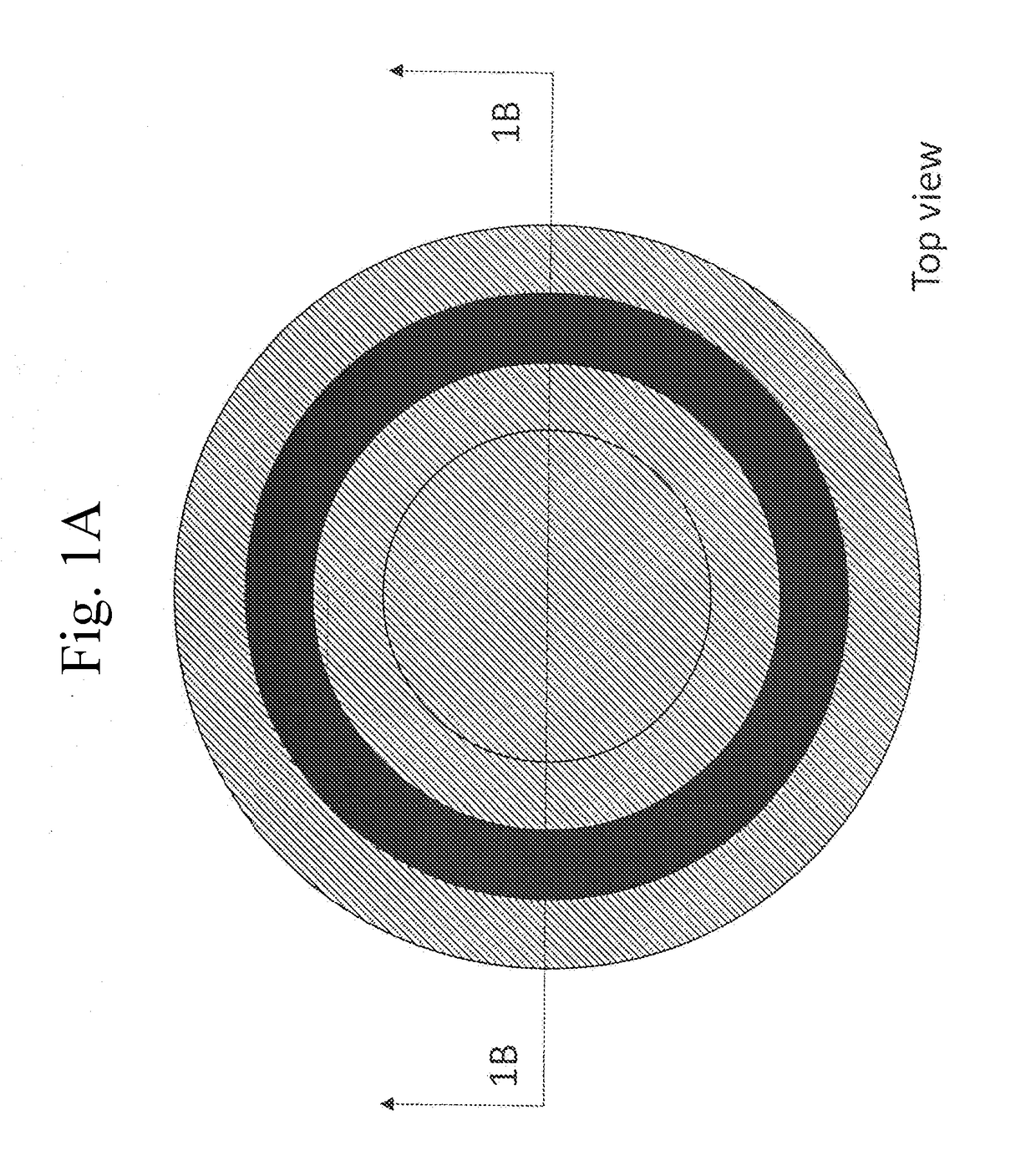Furniture Protector Against Bed Bugs and Other Crawling Insects
a technology for furniture and crawling insects, applied in the field of insect control devices, can solve the problems of bed bugs not being able to climb, debris easily falling in the trap, and clogging the sides of the trap,
- Summary
- Abstract
- Description
- Claims
- Application Information
AI Technical Summary
Benefits of technology
Problems solved by technology
Method used
Image
Examples
first embodiment
[0073]FIG. 1A is a top view of a trap barrier. FIG. 1B is a cross-sectional view of the trap barrier of FIG. 1A along arrows 1B.
[0074]Referring to FIGS. 1A-1B, the trap barrier can include a solid base bottom 100 having a generally ring shaped pit or moat with a sticky surface 150 and an inner wall 110 for supporting a furniture leg inside of a well area 120 and having an outwardly bent edge 130 with a lower facing surface having a smooth surface or pesticide treated surface.
[0075]The barrier can have an outer wall 102 having an inwardly bent edge 106, with an undersurface 107 that can have a smooth(slick) or pesticide-treated surface. Additionally, the undersurface can be both a smooth(slick) surface with a pesticide treated surface.
[0076]The inner wall 110 can have a greater height than the outer wall 102. Underneath the base bottom 100 can be a surface 160 such as a slick surface to facilitate moving furniture that is supported by the barrier. Here, the outer wall 102 is generall...
second embodiment
[0080]FIG. 2A is a top view of a second embodiment trap barrier. FIG. 2B is a cross-sectional view of the trap barrier of FIG. 2A along arrows 2B.
[0081]The embodiment in FIGS. 2A-2B is similar to that in the previous embodiment, with the exception of having the outer wall 104 angled inwardly from the base portion 100.
third embodiment
[0082]FIG. 3A is a top view of a third embodiment trap barrier. FIG. 3B is a cross-sectional view of the trap barrier of FIG. 3A along arrows 3B. FIG. 3C is a bottom view of the trap barrier of FIG. 3A.
[0083]A base portion 300 can form a protector top having a furniture attachment peg extending upward from a mid portion of the base for insertion into a bottom of a furniture leg. Extending below the base can be a downwardly protruding outer side wall 310 forming a channel therein with a furniture support leg 350 extending downwardly from a mid portion of the base. A channel can include a lower facing surface 340 having one of the smooth surface or the pesticide treated surface. The furniture support leg 350 is large enough to raise the outer side wall 310 above the floor support surface.
PUM
 Login to View More
Login to View More Abstract
Description
Claims
Application Information
 Login to View More
Login to View More - R&D
- Intellectual Property
- Life Sciences
- Materials
- Tech Scout
- Unparalleled Data Quality
- Higher Quality Content
- 60% Fewer Hallucinations
Browse by: Latest US Patents, China's latest patents, Technical Efficacy Thesaurus, Application Domain, Technology Topic, Popular Technical Reports.
© 2025 PatSnap. All rights reserved.Legal|Privacy policy|Modern Slavery Act Transparency Statement|Sitemap|About US| Contact US: help@patsnap.com



